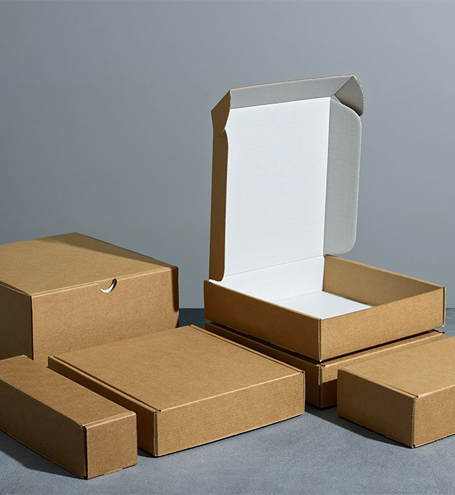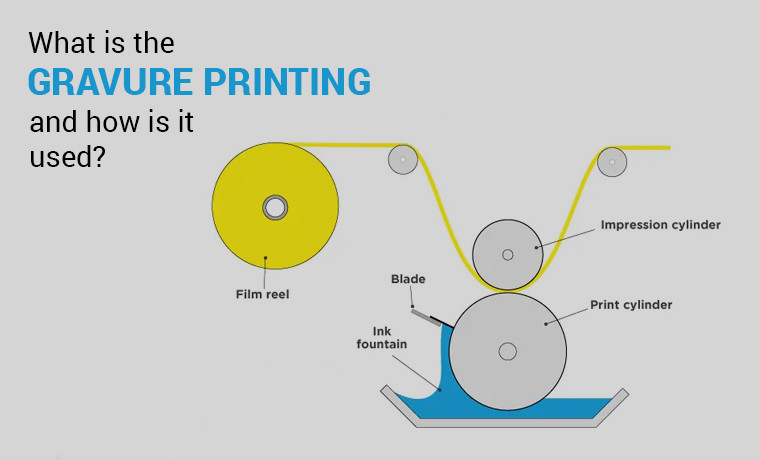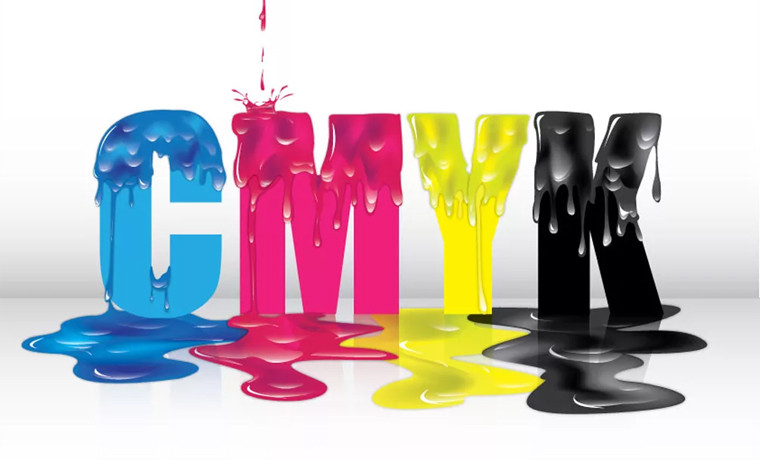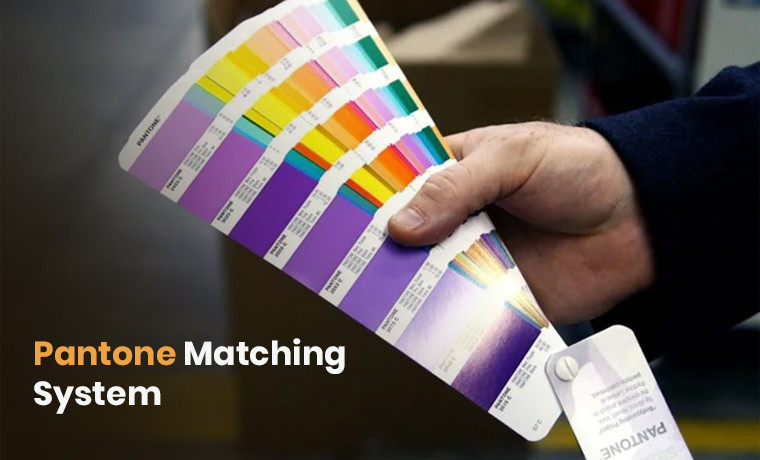Top 12 Eco-Friendly Packaging Materials for Businesses
September 05, 2025

Non-recyclable packaging waste has been a major environmental issue for years. Every industry contributes to this problem, with plastic packaging alone accounting for 141 million tonnes of waste annually, according to WRAP (Waste and Resources Action Programme, A climate action NGO). Much of this waste, including plastic and foam, is in landfills, causing long-term environmental damage.
The pandemic shifted shopping habits toward e-commerce, significantly increasing packaging waste. While online shopping offered convenience, it also led to a surge in plastic packaging, further harming the planet. However, this has sparked a shift toward more sustainable practices, with many businesses adopting eco-friendly packaging solutions to reduce their environmental footprint.
If you are a business owner looking to embrace sustainability, this guide will explore various eco-friendly packaging materials, their benefits, and how they can help you contribute to a greener future.
1. Kraft Paper: Strong & Recyclable
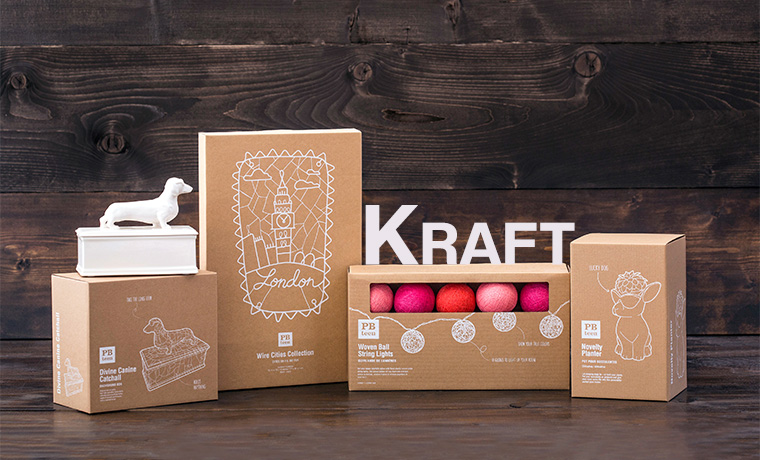
Recyclable Kraft paper originated from fresh wood pulp. It is a naturally brown paper known for its durability, strength, and versatility. This Kraft paper packaging material is better than other paper or plastic materials as it does not lose its durability and recyclability, even if reused multiple times.
What sets Kraft paper apart is its excellent recyclability. It helps reduce waste and minimizes environmental harm. This makes it the best packaging material for a greener future. Soap wrapping papers and paper bags can be made with the help of this material to accommodate various products.
2. Compostable: Zero Waste Solution
Compostable packaging is an environmentally friendly choice. This eco-friendly packaging material is made from natural resources like cornstarch, sugarcane, or mushroom fibers and is designed to break down into natural elements. It leaves no harmful residues and reduces waste. Since it is made from natural resources, it is not toxic to the environment.
3. Molded Pulp: Shock-Absorbing & Sustainable
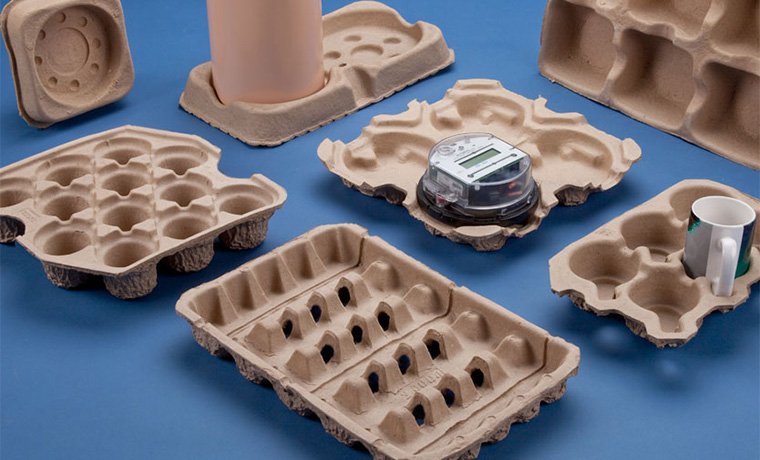
The molded pulp, also known as model fiber, is another sustainable packaging choice. It is produced from recycled paper or cardboard fibers. Its process involves turning these fibers into a slurry when this raw material is shredded and mixed with water, which is then molded into various shapes and dried. Due to its strength and shock-absorbing properties, it is good to use in packaging and trays.
4. Recycled: Reuse & Reduce Waste
Recycled packaging is another form of environmentally friendly material created from materials that have been in use before. Through a process, it transforms used packaging material into a new form.
This sustainable packaging material consists of glass, plastic, metal, paper, and cardboard and is an alternative to packaging made from natural resources. It is a less expensive material than others, reduces waste, and lowers energy consumption.
5. Corrugated Cardboard: Ideal for Shipping
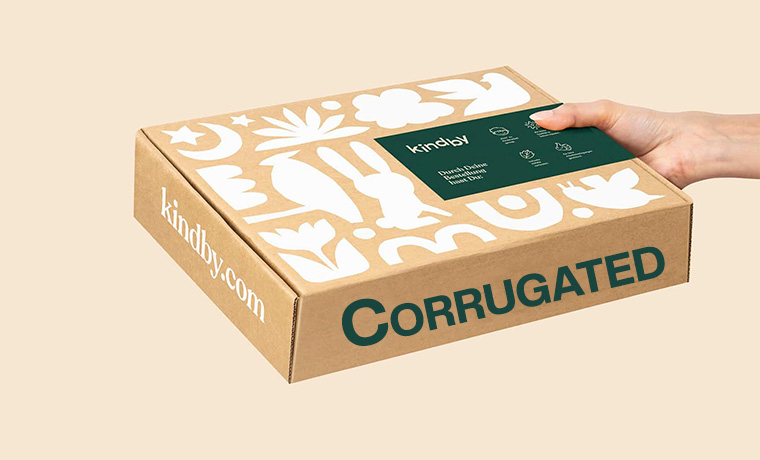
Corrugated material is an eco-friendly choice for e-commerce shipping, retail, and food packaging. It is made of three or five layers of paper. Two or three outside flat sheets of paper are liners glued with one or two fluted (wavy) liners.
They provide cushioning and strength. Its wavy pattern offers a strong structure to store and protect valuable items during transit. This sustainable packaging material offers intense protection in handling and shipping delicate or heavy-duty items.
6. Glassine: Luxurious & Moisture-Resistant
Glassine is a transparent, smooth, and glassy paper made packaging material. It is made from wood pulp, which makes it recyclable. Also, it provides a luxurious look and can be used for wrapping luxury candles.
This environmentally friendly packaging protects products from moisture, air, and grease. Its translucent feature allows customers to see through the product inside. It is excellent for packing food, cosmetics, and stationery items.
7. Bioplastics: Plant-Based Plastic Alternative
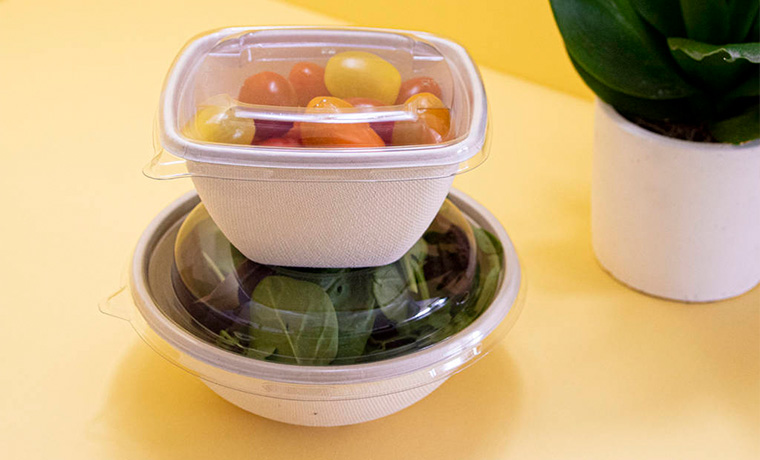
Bioplastics are plastic materials produced from renewable biomass sources like corn starch, potato starch, and recycled food waste. They reduce pollution when decomposed and are suitable for the food industry because you can easily break it down after use.
8. Mushroom: Lightweight & Biodegradable
Mushroom is a lightweight yet biodegradable packaging material made from fungus roots called mycelium. Its durability and strength allow it to be shaped into various forms. This sustainable material provides superior thermal insulation properties, which is why it is ideal for temperature-sensitive items and protects products during shipping.
9. Cornstarch: Safe for Food
Cornstarch is an eco-friendly material made from biodegradable polylactic. This eco-friendly packaging material reduces reliance on fossil fuels and lowers carbon footprint. If you need safe food packaging material, prefer this. It is expensive but protects food from moisture, oxygen, and heat.
10. Bamboo: Durable & Compostable
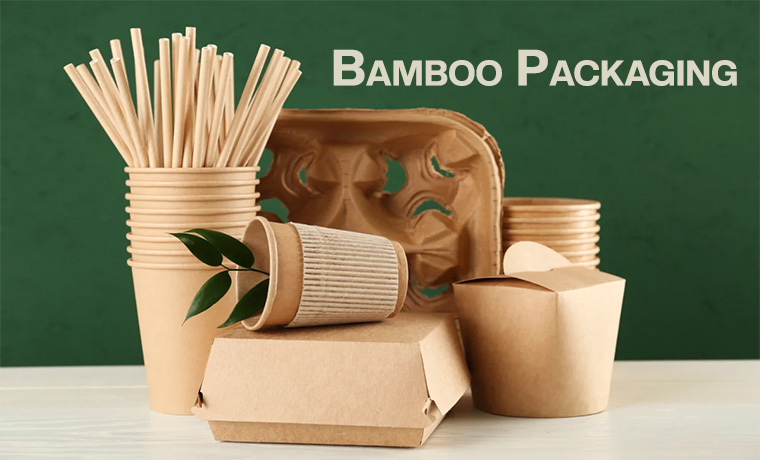
Bamboo packaging material is environmentally friendly and made from bamboo plants. This compostable material is suitable for preserving various food items, such as fruits, vegetables, snacks, and bakery items.
11. Cellulose: The Eco-Friendly Plastic Alternative
Cellulose is a biodegradable material made from organic resources, which makes it an excellent alternative to plastics. The best biodegradable packaging material for e-commerce packaging. Its oxygen, UV light, and moisture-resistant properties protect products from external elements. Thanks to its eco-friendly nature, it is ideal for food preservation to maintain its quality.
12. Seaweed: The Future of Sustainability
Seaweed packaging material is appearing as a groundbreaking, eco-friendly packaging solution. It is made from renewable and abundant resources and is an alternative to plastic packaging material.
Do you know how seaweed is formed? It is processed from algae and possesses unique properties that make it suitable for packaging. Readily breaking down in a natural environment, this seaweed packaging has minimal environmental impact. It can be created in different shapes, and containers made from seaweed for food are one of the examples.
Read More: The Ultimate Guide To Eco-Friendly Reusable Shopping Bags
12 Eco-Friendly Packaging Materials: A Brief Comparison
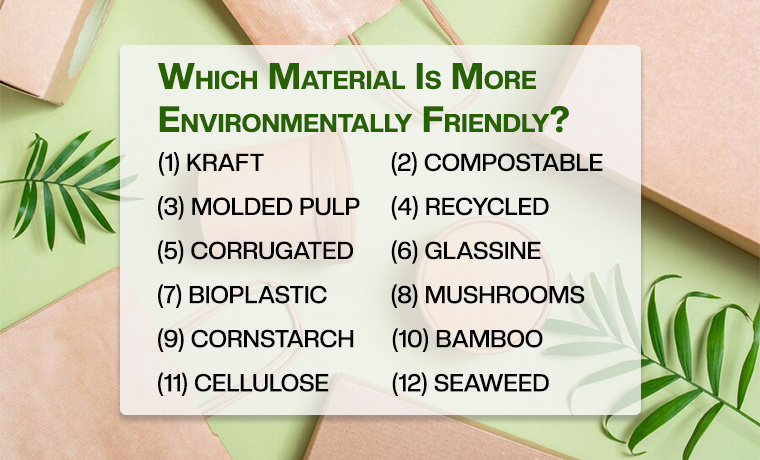
A short and clear comparison based on key criteria for the 12 environmentally-friendly packaging materials is here.
| Materials | Biodegradable | Compostable | Recyclable | Best for |
| Kraft | YES | NO | YES | Bags, wrapping, mailers, inserts |
| Compostable | YES | YES | NO | Food items, retail goods |
| Molded Pulp | YES | YES | YES | Trays, protective inserts |
| Recycled | YES | NO | YES | Boxes, filler material |
| Corrugated Cardboard | YES | YES | YES | Shipping boxes, e-commerce packaging |
| Glassine | YES | NO | YES | Luxury wrapping |
| Bioplastics | YES | YES | YES | Food-safe packaging, disposable cutlery |
| Mushroom | YES | YES | YES | Protective packaging for fragile items |
| Cornstarch | YES | YES | YES | Loose fill, food-safe packaging |
| Bamboo | YES | YES | YES | Food trays, utensils, gift packaging, reusable containers |
| Cellulose | YES | YES | YES | Food wraps, barrier films, food packaging |
| Seaweed | YES | YES | NO | Sachets, edible films, single-use wraps |
Which Material Is More Environmentally Friendly?
It is difficult to determine which eco-friendly material is a far better option. The environmental impact depends on the material from which it is produced. We have explained various eco-friendly packaging materials above. From styrofoam-like material bamboo to glass and bioplastics, we have pictured green packaging solutions. Discover your business needs and choose a material that is a good fit.
Conclusion
To sum up, these nature-friendly packaging materials are essential for every business. With climate-friendly practices, you can meet growing demands for eco-friendly packaging materials and preserve a greener tomorrow. By choosing biodegradable, reusable, and recyclable packaging material carrying sustainable printing options, you are playing your part in reducing waste and marking your brand to entice eco-consciousness.
After reading this guide, we hope you will better understand environmentally friendly packaging materials. Now, you can opt for the right green packaging material to meet your business needs. If you are ready to shift to eco-friendly practices, Custom Product Packaging can help. Give us a quick call or email us at orders@customproductpackaging.com. We leave no stone unturned to serve our clients.
